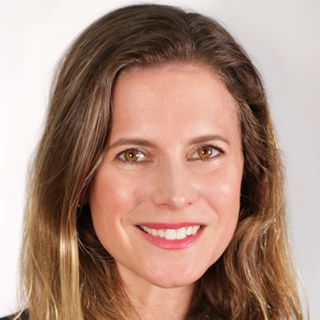
Indie Beauty Brand Founders Divulge How They Secured Capital
In this edition of Beauty Independent’s ongoing series posing questions to beauty entrepreneurs, we ask nine founders and executives: What’s the best move you made to secure investment?
- Mariya Nurislamova CEO & Co-Founder, Scentbird and Deck of Scarlet
The best move as far as getting funding was getting into Y Combinator, a Silicon Valley-based tech accelerator, which is sometimes dubbed Harvard for entrepreneurs. At the end of a three-month program, we got to pitch Scentbird in front of a group of some of the most prominent tech VCs.
This was fundraising on steroids since 300 investors heard our pitch at exactly the same time, which inadvertently created momentum for the round. This experience helped us forge relationships with VCs for later rounds and paved the way to our growth.
As far as financial tips, we decided to take a very healthy approach to our unit level economics right from the start. We worked on improving the margins and our supply chain from the get-go, instead of burning through cash. While this is common practice for more traditional businesses, hyper-growth startups generally do the reverse: grow first, break even later. For us, making sure we build a sustainable business at hyper speed is the name of the game.
- Cassy Burnside Founder, FATCO
While our launch into Target in January 2018 was certainly exciting, it was also stressful. Being a bootstrapped company with no investment partners, I had no idea how we would pay for inventory to support our launch. I spoke to many banks regarding PO [purchase order] and AR [accounts receivable] financing, which was definitely an option for us. Then, in October of 2017, we acquired an SBA [Small Business Administration] loan for $250,000. This was huge for us because it gave us access to the capital that we needed to purchase inventory for our launch into Target.
- Holly Harding Founder, O'o Hawaii
In my first business, I started the company with $50 and grew it to several million dollars in revenue. We struggled for many years to have proper funding. We would get an SBA loan here and there, and use invoice factoring to help, but never truly had the capital injection that we needed. Although it was very challenging, I now look at it as a blessing because we scrutinized every dollar coming in and out, and had to explore all sorts of alternatives to providing cash flow.
With the launch of my new business, O'o Hawaii, we were able to inject a nice sum of our own money from the sale of the previous company, which then made us look much stronger to our local bank to secure additional start-up funding. Having made a friendly connection with my neighbor two doors down that admired my yard turned out to be a golden resource when I needed to apply for funding as unknowingly she was the branch manager of one of the local banks.
The moral of the story is that, if you go the traditional route of using a bank, they want to see proven sales or see a sizable investment on your part in order for them to take a chance in the beginning. Having a personal connection with a banker in your community is also very helpful.
- Danuta Dudek Founder, Cotarde
Our company is independently-financed by the Cotarde founders, and our best, long-term, risk-reducing move was to save and, then, utilize every financial asset we’ve had and invest it for company’s organic growth. There is no funding coming from any third party. In other words, no large corporation standing behind us.
We’ve been scaling up as we go with our own strength. Meaning, sometimes we have to say no or not yet to opportunities as we are still a small company. But we believe in not only organic and controlled scale up, but also freedom of action. Being independent financially allows us to do what we want and how we want it.
Other financial tips: 1. Set priorities for the year/quarter and allocate your budget accordingly, 2. Don’t lose focus. One may easily get distracted by all the opportunities around, 3. Be honest. Business people tend to respect those who don’t over-promise, but rather plan and deliver when the time comes, 4. Be true to yourself. If getting a partner, angel investor or turning to a bank sits fine with you, go for it.
- Dino Ha CEO and Co-Founder, Memebox
We went to investors again and again. Even if we had been rejected, we provided updates on company progress, and we worked to develop long-term relationships.
- Rebekah Jasso Jensen Founder and CEO, Sanara
We have been funding our brand via a series of things. When I worked as a full-time employee, we were acquired by another company and, with that, came a large sum of money. Basically, the environment was so toxic they were paying us to stay, and it was a sum of money I honestly couldn’t refuse.
That gave me about $24,000 to start and really take my business seriously. My husband and I are both entrepreneurs at heart, and we started selling Viking Strong on Amazon about two years ago. That small income helps us month to month. Our company is currently debt-free. [That’s] something we are proud of, but I know there will come a time when I we will need to get a loan or look into investors.
With our rebrand to Sanara, our first brand sales have slowed as I stopped promoting it, and we were going to reformulate our products and start working with a local manufacturer. We are excited to be working with one now, but let me tell you rebrands are expensive, and the guilt of all that wasted money on old labels and marketing materials can easily make you sick, especially when every penny counts.
One Day, as I was venting to my mom, she gave me a great quote from Reid Hoffman, the founder of LinkedIn, “If you are not embarrassed by the first version of your product, you’ve launched too late.”
While I wasn’t embarrassed of my first product/brand per se, I have to admit this new name and working with a real manufacturer gives me so much more confidence and vision than I had before. So, when I want to cry over the money I’ve deemed lost, I remind myself it’s part of the process, and I wouldn’t be here if I had started there.
- James La Founder, NIUCOCO
Everyone loves a great and compelling story. However, if you're looking for cash to get you going, there isn't one specific move to secure investment/funding. It's an accumulation of things: Build your team, know your subject and know your market. Without them, you're not only selling a fairy tale, you're selling a risk. Our initial meeting [had] a 45-minute window to present our brand. The meeting ended up lasting four hours.
- Julia Teren Founder, Thesis Beauty
We are a completely self-funded, debt-free company and have been running sustainably for many years. It still amazes me how we managed to start almost literally on a shoestring during the recession and grow so much.
In the future, we may be considering investments to facilitate growth, but exclusively on the terms that the mission and values will not be compromised in any way. If anything, the investment will need to support them. I don't know if we will be able to find such a unicorn.
- Alexander Zorub Founder and CEO, Olio Di Alessandro
During and after business school, I worked in venture capital (i.e. the cool finance guys in T-shirts who fund and build startups). Having spent time on the financier side, my advice is:
1. Initially, don’t spend time seeking capital. Instead, develop a product and sell it to someone repeatedly, updating it based on customer feedback. Your sales don’t have to be large, but demonstrate that your product and/or marketing has meaningful, structural appeal to an identifiable demographic. That traction is more meaningful than the flashiest of pitches, especially from a first-time entrepreneur without a track record.
2. When you pitch, speak simply such that a 10-year-old would comprehend. That way, you’ll avoid the most common failure of pitches: not communicating what your product is and does.
3. Don’t accept all capital sources. Be picky. Think of funding as the product of a great rapport, rather than vice versa. A successful startup lasts longer than an average marriage, so be sure that you really like your investors.
If you have a question you’d like Beauty Independent to ask beauty entrepreneurs, please send it to editor@beautyindependent.com.






Thank you again IBE! Ellie of SKINPROBIOTICS.net